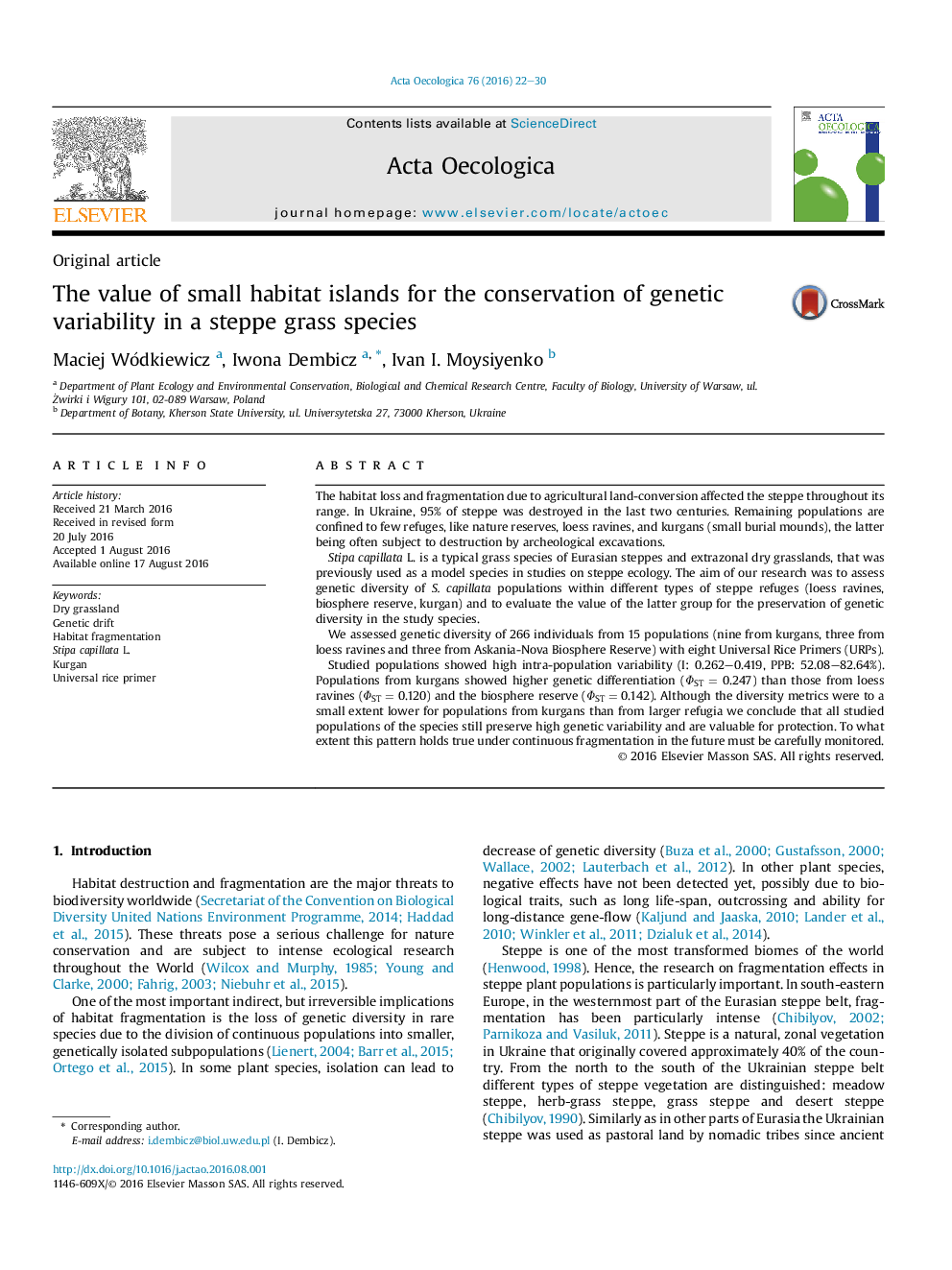| کد مقاله | کد نشریه | سال انتشار | مقاله انگلیسی | نسخه تمام متن |
|---|---|---|---|---|
| 4380628 | 1617696 | 2016 | 9 صفحه PDF | دانلود رایگان |
• Kurgans are small steppe vegetation islands within arable landscape of Ukraine.
• Kurgans may function for Stipa capillata as a set of dispersed refugia.
• Kurgans are important for sustaining the genetic variability of S. capillata.
• Genetic variation is differently partitioned on kurgans than in large refugia.
• Preservation of steppe vegetation on kurgans must accompany archeological research.
The habitat loss and fragmentation due to agricultural land-conversion affected the steppe throughout its range. In Ukraine, 95% of steppe was destroyed in the last two centuries. Remaining populations are confined to few refuges, like nature reserves, loess ravines, and kurgans (small burial mounds), the latter being often subject to destruction by archeological excavations.Stipa capillata L. is a typical grass species of Eurasian steppes and extrazonal dry grasslands, that was previously used as a model species in studies on steppe ecology. The aim of our research was to assess genetic diversity of S. capillata populations within different types of steppe refuges (loess ravines, biosphere reserve, kurgan) and to evaluate the value of the latter group for the preservation of genetic diversity in the study species.We assessed genetic diversity of 266 individuals from 15 populations (nine from kurgans, three from loess ravines and three from Askania-Nova Biosphere Reserve) with eight Universal Rice Primers (URPs).Studied populations showed high intra-population variability (I: 0.262–0.419, PPB: 52.08–82.64%). Populations from kurgans showed higher genetic differentiation (ΦST = 0.247) than those from loess ravines (ΦST = 0.120) and the biosphere reserve (ΦST = 0.142). Although the diversity metrics were to a small extent lower for populations from kurgans than from larger refugia we conclude that all studied populations of the species still preserve high genetic variability and are valuable for protection. To what extent this pattern holds true under continuous fragmentation in the future must be carefully monitored.
Journal: Acta Oecologica - Volume 76, October 2016, Pages 22–30
